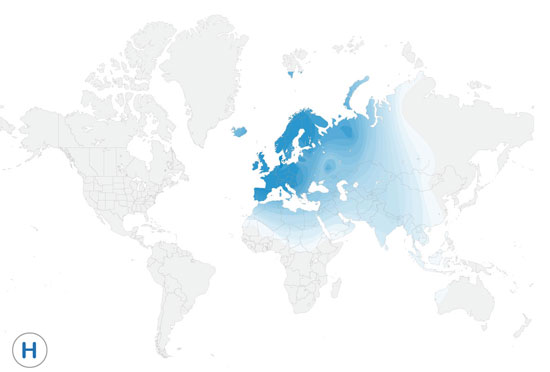

Haplogroup H6 Distribution
Return to mtDNA Test Results Summary Page
Mitochondrial haplogroup H is a predominantly European haplogroup that participated in a population expansion beginning approximately 20,000 years ago. Overall more than 40% of the total European population carries this mitochondrial variation. It is rather uniformly distributed throughout Europe suggesting a major role in the peopling of Europe, and descendant lineages of the original haplogroup H appear in the Near East as a result of migration. It can also be found in the Caucasus and Central Asian regions, though frequencies are considerably lower than that of Europe. More than twenty subclades of haplogroup H have been identified with several showing regional distributions.
Studies suggest that Haplogroup H6 is of Middle Eastern or Central Asian in origin and is an older branch of haplogroup H. Its age is estimated at around 40,000 years. H6 is very frequent in Central and Inner Asia, comprising 21% of the total haplogroup H population in these regions. It is also common on the Arabian Peninsula. H6 is It is also found at very low frequencies in Europe. Further research will better resolve the distribution and historical characteristics of this haplogroup.
H6a – H6a has similar distribution to its parent branch H6. Further research will better resolve the distribution and historical characteristics of this haplogroup.
H6c – H6c is found at very low frequency, and can be found in European populations. Further research will better resolve the distribution and historical characteristics of this haplogroup.
